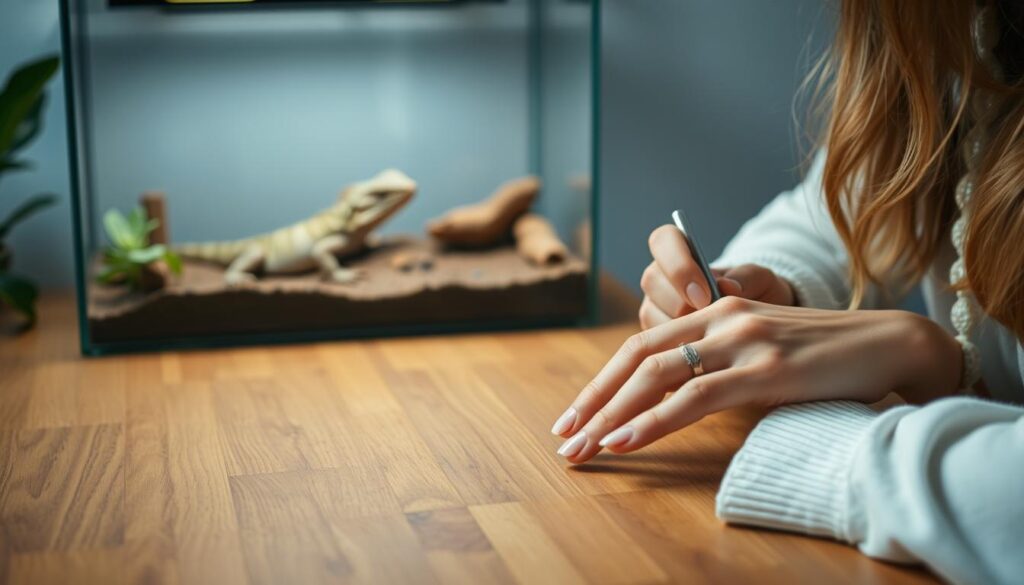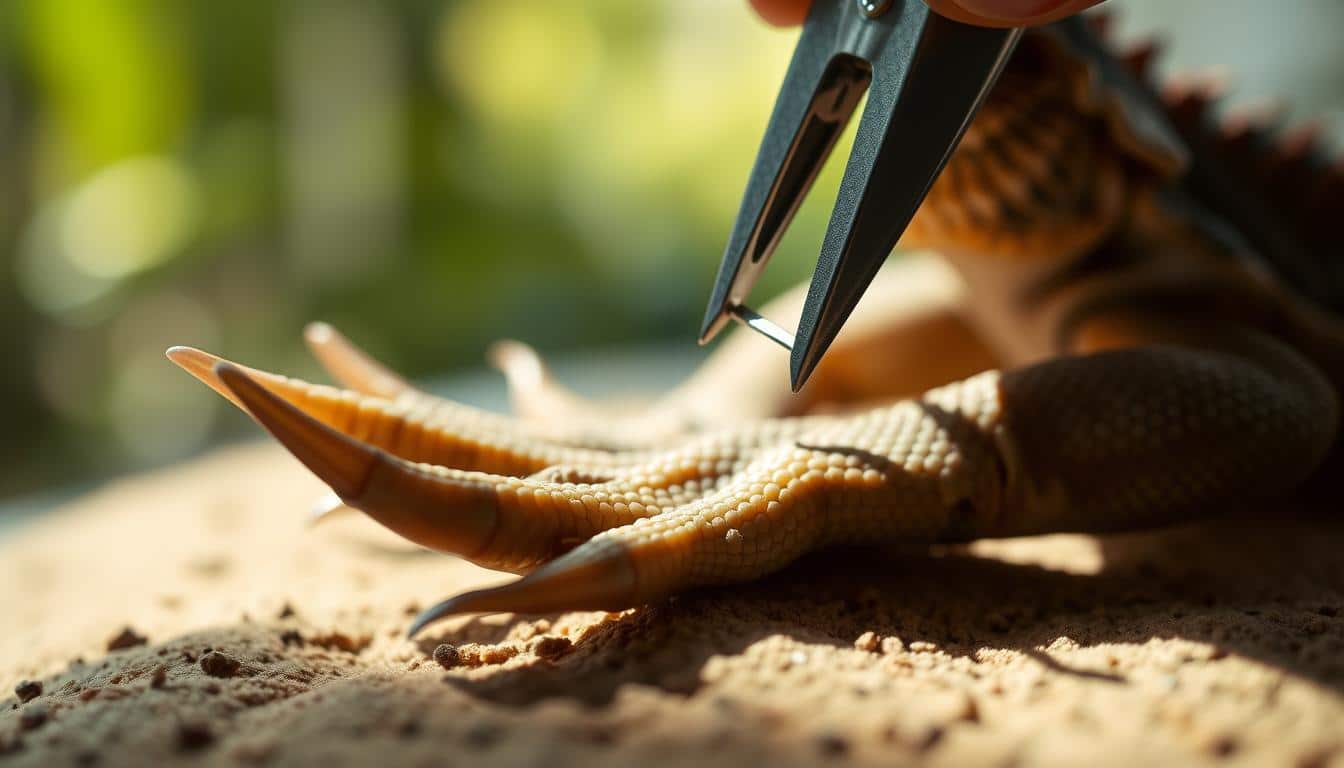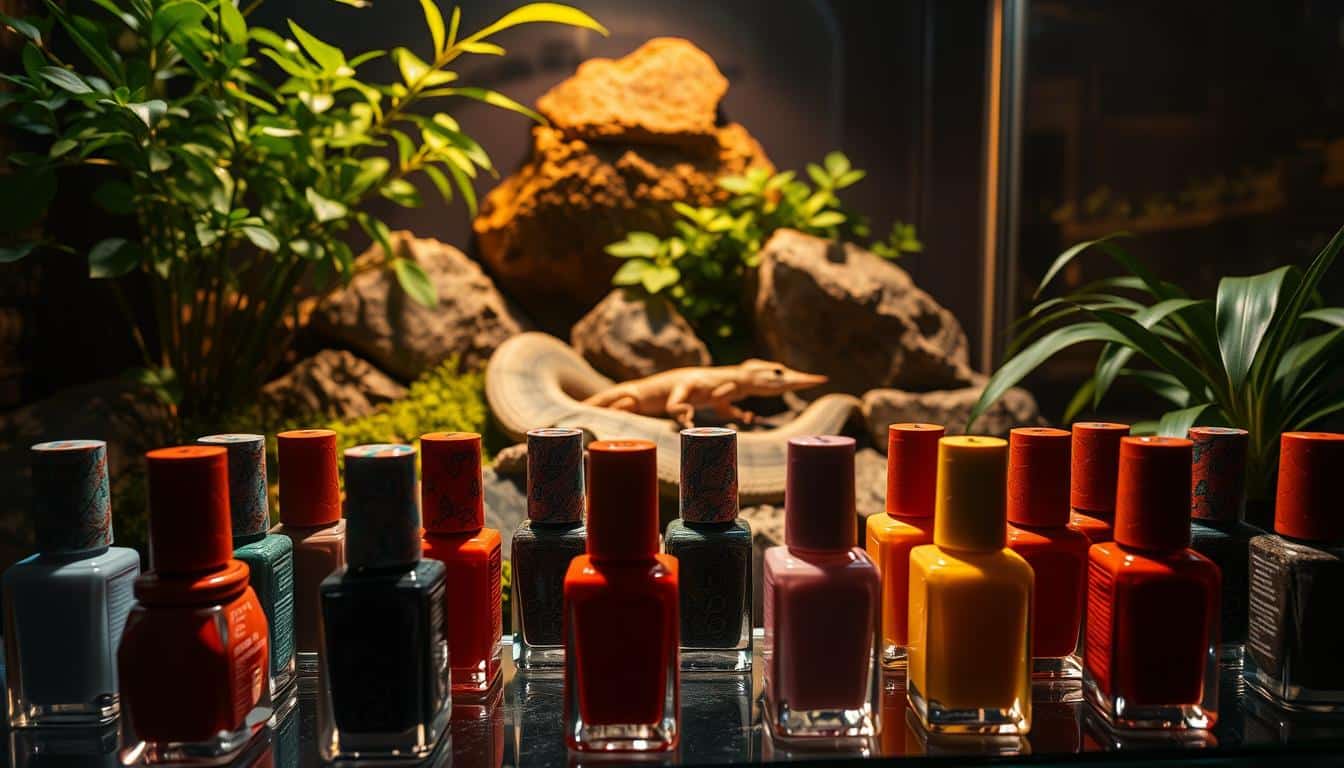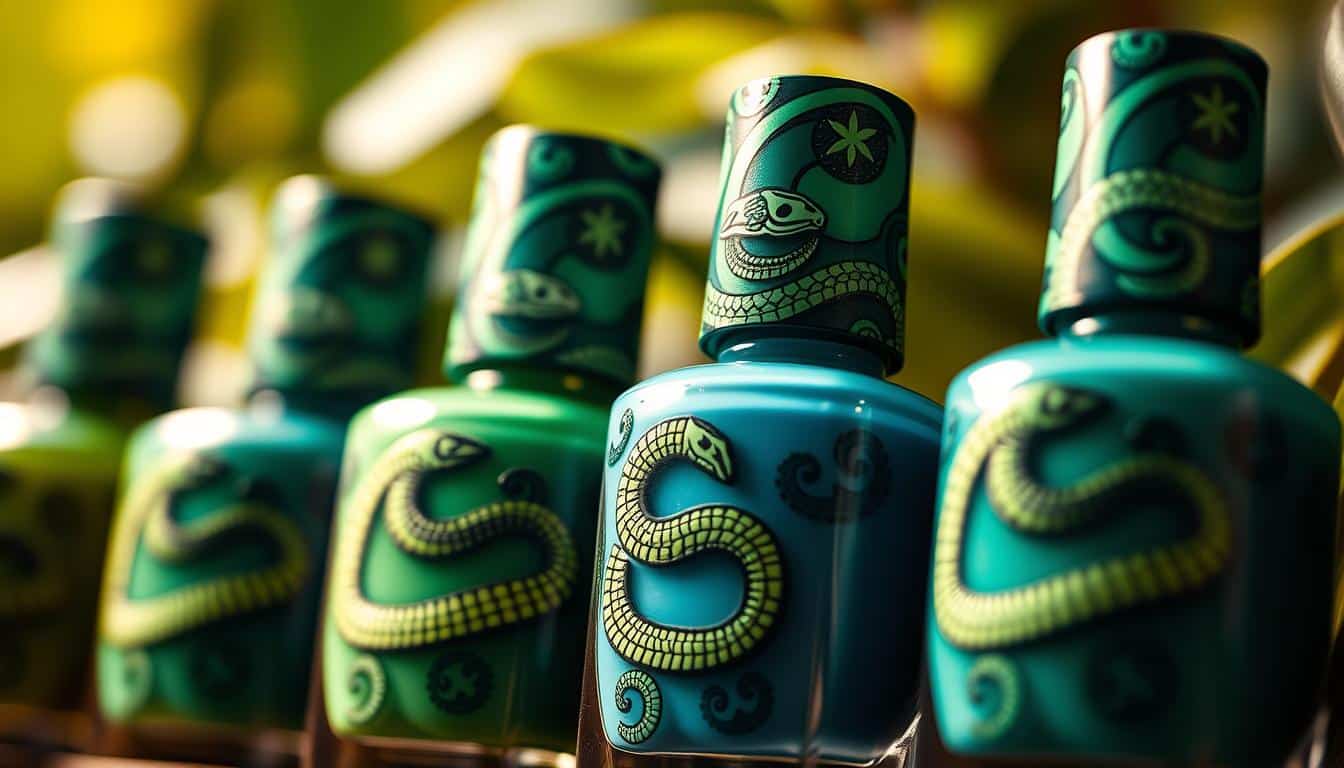Anúncios
Nail painting is fun, especially for pet lovers. But, it can be risky around reptiles. It’s vital to know how certain chemicals might affect them. This guide helps pet owners enjoy nail art without harming their reptilian friends. By understanding the dangers and how to avoid them, you can keep your pets safe. Creating a safe space ensures everyone, including your reptiles, stays happy and healthy.
Introduction to Nail Painting Around Reptiles
Nail painting among pet owners has grown popular, merging personal grooming with reptile care. Many people find joy in doing their nails near their reptile pets. They see it as a fun, safe activity. However, this practice can be risky for reptiles.
Reptiles are very sensitive to chemicals, especially those in nail products called volatile organic compounds (VOCs). It’s important for pet owners to know the safety rules for nail painting to keep their reptiles safe. Not being careful can expose reptiles to dangerous substances during nail painting.

Understanding Reptile Sensitivity to Chemicals
It’s key to understand that chemicals can really affect reptiles. These animals are more open to harm from various substances because of their unique bodies. Knowing about their chemical sensitivity helps owners keep their reptiles healthy, especially when doing things like painting nails.
Chemical Risks to Reptiles
Reptiles absorb chemicals easily through their skin and breathing. This can lead to serious health problems. Ingredients in nail products can be very bad for them. They can harm their breathing and skin. The main risks include:
- Respiratory issues caused by inhaling toxic fumes.
- Skin irritations from touching harmful chemicals.
- Increased stress levels leading to behavioral changes.
Common Nail Products That Are Harmful
Many nail products have ingredients that are dangerous for reptiles. Owners need to watch out for certain chemicals in nail polishes and removers. Ingredients to avoid include:
- Formaldehyde – a preservative and hardener linked to skin irritation.
- Toluene – known for its solvent properties that can affect respiratory function.
- Phthalates – often included for flexibility, posing potential hormonal disruption.
Best Practices for Painting Nails Around Reptiles
When painting your nails at home with reptiles around, you need to be very careful. It’s important to follow certain rules to keep your pet reptiles safe. This way, you can enjoy doing your nails without any worries.
- Choose moments when reptiles are less active, such as during their nighttime hours. Timing is crucial for maintaining grooming safety.
- Opt for non-toxic nail products specifically designed to minimize risks to animals. Reading labels carefully ensures compliance with safety standards.
- Avoid painting nails in the same room where reptiles reside. This step significantly reduces the chances of exposure to harmful chemicals.
- Create a dedicated, well-ventilated area for nail painting sessions. This aligns with comprehensive reptile care practices to protect the health of your pets.
Keeping your reptiles safe and comfortable is vital when you’re painting your nails. By following these guidelines, you’ll have a better nail painting experience. Plus, you’ll ensure a happy life for you and your reptilian friends.
Choosing the Right Products
It’s very important to pick the right nail products to keep both your nails and reptiles safe. Choose products without harmful chemicals. This ensures your pets’ safety and makes painting your nails fun. We’ll go into what nail polishes and removers are safe for pet owners.
Nail Polish and Remover Safety
When picking out nail polish or removers, go for ones marked non-toxic. There are pet-safe brands out there. They aim to lower risks for your reptiles. Always look for dangerous ingredients like toluene or formaldehyde. Brands like Zoya and Ella + Mila have safe, non-toxic nail polishes.
Non-toxic Alternatives
You might also want to try water-based or plant-based nail products. Kure Bazaar is one brand offering eco-friendly nail polish. Water-based nail removers are safer and make cleaning up easy and less harmful. Make sure to carefully read labels to pick the safest products for your home.
Preparing the Environment for Safe Nail Painting
It’s key to make a safe place for nail painting to keep your reptiles safe. Set up your nail painting area well to cut down on risks from chemicals. Choose a spot for nail painting that’s not close to where your reptiles stay. This stops any spills or fumes from harming them.
Make sure the place where you paint nails is airy. Good airflow reduces the strength of chemicals in nail products. This protects you and your reptiles. Use fans or open windows to make the air even cleaner. It’s also smart to put something between the nail painting spot and your reptiles. This gesture blocks any indirect contact with dangerous substances.
Keeping your nail painting area clean is super important. Get your tools and products ready ahead of time. This avoids rushing and keeps the area free of unwanted dirt. Throwing away trash like used cotton balls and empty nail polish bottles correctly is also important. By following these steps, you’ll have a nail painting area that’s safe for your reptiles.
Establishing a Fume-Free Zone
It’s super important to have a fume-free area when you’re doing your nails, especially if you have sensitive reptiles around. Making sure there’s good airflow and keeping your nail work away from where your reptiles live can lower the risks. If you use good ventilation and don’t get too close to their homes, both your nails and your pets will be safer.
Ventilation Techniques
Having good airflow is key to keeping the air clean. Here are some ways to do it:
- Open windows to let in fresh air.
- Use exhaust fans to get rid of bad air.
- Have air purifiers with HEPA filters to catch bad particles.
These steps help get rid of nasty smells and chemicals. This keeps your reptiles healthy.
Distance from Reptile Habitats
It’s crucial to not get too close to where your reptiles stay when using nail products. Remember these tips:
- Paint your nails at least ten feet away from reptile homes.
- Watch how the air moves so fumes don’t go their way.
- Check the area before you start painting your nails.
Following these tips will help make a safe space. It shows you care about your reptiles’ health.
Handling Your Reptiles During Nail Painting Sessions
When painting your reptile’s nails, you need to be kind. This keeps them calm. Knowing how your reptile acts helps both of you enjoy the process more.
Minimizing Stress for Your Reptile
Try these ideas to keep your reptile happy:
- Use slow, gentle movements to avoid startling your reptile.
- Provide a cozy, familiar space during nail painting.
- Avoid loud noises and excessive handling.
Making your reptile feel safe lowers their stress. This makes nail painting go smoothly.
Choosing the Right Time for Nail Painting
The timing is key for nail painting. Choose times when your reptile is calm, like:
- Early morning or late evening when they are naturally less active.
- After feeding, as they may enter a resting phase.
Picking the right time helps make the nail painting a good experience. It makes nail care easier.
Observing Your Reptile’s Behavior Post Painting
After you paint your reptile’s nails, watch them closely. This helps you see how they handle the nail products. If they act differently, it might mean they’re not feeling great. Keeping an eye on these changes is key for your pet’s health.
Signs of Distress in Reptiles
Owners should watch for signs that the nail polish is bothering their reptiles. Some of these signs include:
- Lethargy or a decrease in activity
- Unusual hiding behavior
- Skin irritation such as redness or swelling
- Changes in appetite, including refusal to eat
- Excessive scratching or rubbing against surfaces
Monitoring Health After Exposure to Products
After using nail products, keep an eye on your reptile’s health. If something seems off, act fast. Make sure their home is clean and they’re drinking enough water. If problems don’t go away, a vet visit might be needed. These actions help your reptile get better.
Alternatives to Nail Painting Near Reptiles
When thinking about different ways to paint nails near reptiles, safety is the top priority. At the same time, it’s important to find solutions that still look good. Since regular nail products can be harmful to reptiles, we must look for safer options.
There are great natural grooming options for those who care about their pets’ safety. Here are a few choices:
- Using dye-like products specifically designed for pets that are non-toxic and safe around reptiles.
- Employing natural oils, such as coconut or olive oil, to give nails a healthy shine without chemicals.
- Trimming nails regularly as part of your reptile care routine, which keeps their nails neat and prevents overgrowth.
- Integrating safe grooming sessions that involve gentle massages, promoting both bonding and well-being.
These methods are not just safer for reptiles but also lead to better grooming habits. By choosing these alternatives, you keep grooming safe and make sure both pets and their owners are happy with the look.
Conclusion
In this article, we’ve learned how important it is to paint our nails safely around reptiles. These creatures are sensitive to chemicals, so we must be careful. Using non-toxic products and making sure the area is safe for our nail sessions will keep them healthy.
Pet owners have the big job of keeping reptiles safe from bad stuff. It’s key to have a place with no harmful fumes and keep them calm when we’re grooming. Watching how they act after we paint our nails helps us know if they’re okay.
Taking care of our reptiles means thinking about their well-being beyond just their basic needs. Being careful with nail painting around them keeps them safe. It also makes our relationship with them stronger.



